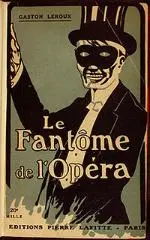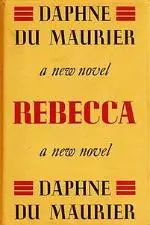Guillermo del Toro’s Crimson Peak has been in theaters since mid-October, and its mild box office is unworthy of the lush and wildly unusual film. It’s likely that Legendary and Universal were unsure what to do with this movie, singular as it is. It’s released in October, it’s a ghost story and it’s directed by the man behind such fright fare as The Devil’s Backbone and Cronos, so it makes sense to market Crimson Peak as a horror movie.
Trouble is, Crimson Peak is no horror movie. It’s a gothic romance – and del Toro himself will tell you that…repeatedly.
One last time before release. Crimson Peak: not a horror film. A Gothic Romance. Creepy, tense, but full of emotion... Like my dancing!
— Guillermo del Toro (@RealGDT) October 10, 2015
Gothic Romance recommendation of the day: CRIMSON PEAK in theaters today!
— Guillermo del Toro (@RealGDT) October 16, 2015
And it’s an incredibly successful gothic romance, at that. We’ve got the demure young woman – here a gothic writer, herself, named Edith and played by Mia Wasikowska – with little family and few friends. She’s swept off her feet by Tom Hiddleston’s Thomas Sharpe, a dashing man of mysterious origin whose single-minded focus on Edith, at the eschewal of more socially appropriate and admiring ladies, flatters her beyond reason. Sharpe’s sister Lucille, played by a terrifying Jessica Chastain, is dark and inscrutable, and together they usher Edith to their vast, decaying estate Allandale Hall, a castle that is sinking into the crimson clay Sharpe works tirelessly to mine.
Crimson Peak has every hallmark of a traditional gothic romance: ghosts, shadowy corridors, secret passageways, ominous portents, howling wind, poison, forbidden love, a woman in distress (though Wasikowska’s Edith is a more modern, palatable version of this trope, refreshingly self-sufficient) and an oppressive atmosphere of dread. This sexy, deranged tribute to Radcliffe and Poe will get you in the mood to read a gothic novel or ten, so here’s a list to help you in that endeavor.
![]() 1. ‘The Castle of Otranto’ by Horace Walpole (1764)
1. ‘The Castle of Otranto’ by Horace Walpole (1764)
The Castle of Otranto is often considered the first gothic novel, with its unprecedented emphasis on the weight of past sins, mysterious relatives, ill augury, a shadowy castle and a virtuous young woman’s oppression by a powerful older man. The tale follows Manfred, the lord of the Castle of Otranto, who believes his family is cursed after his son is killed by a helmet crashing from the sky on his wedding day. Manfred deals with this curse in a self-serving and rather villainous manner, abandoning his wife, attempting to claim his late son’s bride as his own, ordering several deaths and committing a few murders himself.
What’s so scary about it?
Manfred has absolute power and absolute corruption of the soul, and he wields both with terrifying gusto.
The most gothic line:
“Do not speak lightly of that picture,” interrupted Matilda sighing; “I know the adoration with which I look at that picture is uncommon—but I am not in love with a coloured panel. The character of that virtuous Prince, the veneration with which my mother has inspired me for his memory, the orisons which, I know not why, she has enjoined me to pour forth at his tomb, all have concurred to persuade me that somehow or other my destiny is linked with something relating to him.”
![]() 2. ‘The Mysteries of Udolpho’ by Ann Radcliffe (1794)
2. ‘The Mysteries of Udolpho’ by Ann Radcliffe (1794)
Radcliffe soon usurped Walpole as the accepted mother of the gothic romance, developing the genre with many of the qualities from which we now know it. Later gothic novelists often use references to Radcliffe as an homage or gothic signifier: Radcliffe’s The Romance of the Forest appears as a plot point in Jane Austen’s Emma and Northanger Abbey, and the opening line of Poe’s “The Oval Portrait” name-checks the author by describing a chateau as “in the fancy of Mrs. Radcliffe.”
The Mysteries of Udolpho was Radcliffe’s most popular novel, following Emily, a young, orphaned French woman as she suffers torment and imprisonment by a wealthy and licentious nobleman named Montoni, whose Castle Udolpho is rife with unnerving noises, mysterious hallways and discomforting incidents.
What’s so scary about it?
Montoni is cruel and hateful, and his sprawling, creaky estate is the stuff of ghost stories.
Most gothic line:
While she walked mournfully on, gazing on the long volumes of vapour, that poured upon the sky, and watching the swallows, tossed along the wind, now disappearing among tempestuous clouds, and then emerging, for a moment, in circles upon the calmer air, the afflictions and vicissitudes of her late life seemed pourtrayed in these fleeting images;—thus had she been tossed upon the stormy sea of misfortune for the last year, with but short intervals of peace, if peace that could be called, which was only the delay of evils.
![]() 3. ‘Frankenstein’ by Mary Shelley (1818)
3. ‘Frankenstein’ by Mary Shelley (1818)
Mary Shelley’s tale of cursed creation is also often considered one of the first science fiction novels, but with its tragic love (between maker and made, as well as between Victor and Elizabeth), its horrific themes and gloomy establishment, Frankenstein is brilliant because it’s also one of the first books to traverse genres and become something uncategorizable. There is much of the gothic in Frankenstein, just as there is the romantic, the scientific and the horrific.
What’s so scary about it?
Need you ask? This is one of the most lasting horror tales of all time. What’s scarier than the dread of our own making, the lumbering, destructive form of our mistakes made corporeal?
The most gothic line:
When night came I quitted my retreat and wandered in the wood; and now, no longer restrained by the fear of discovery, I gave vent to my anguish in fearful howlings. I was like a wild beast that had broken the toils, destroying the objects that obstructed me and ranging through the wood with a stag-like swiftness.
![]() 4. ‘The Vampyre’ by John William Polidori (1819)
4. ‘The Vampyre’ by John William Polidori (1819)
Conceived of during the same legendary, literary summer in which Mary Shelley dreamt up Frankenstein, Polidori’s short story “The Vampyre” introduced a generation of writers and readers to the Byronic hero. His Lord Ruthven, the debonair vampire with a title, is inspired by fellow traveler Lord Byron’s laconic arrogance and dangerous charm.
But Polidori didn’t only invent an archetypal character, but a sub-genre of his own: the vampire story, a style that influenced books from Dracula all the way down to Twilight.
What’s so scary about it?
Polidori introduced us to the seductive vampire, a bloodsucker so charismatic that women offer their necks helplessly in the wake of his allure.
The most gothic line:
At the desire of Aubrey they searched for her who had attracted him by her cries; he was again left in darkness; but what was his horror, when the light of the torches once more burst upon him, to perceive the airy form of his fair conductress brought in a lifeless corpse.
![]() 5. ‘The Fall of the House of Usher’ by Edgar Allan Poe (1839)
5. ‘The Fall of the House of Usher’ by Edgar Allan Poe (1839)
Poe perfected what was, until his arrival, a still-fledgling genre, and “The Fall of the House of Usher” is his most quintessentially gothic short story. It details the deterioration of twin siblings Roderick and Madeline Usher, who are attended to by a nameless narrator as they give into illness and emotional instability in their “mansion of gloom,” a vast estate with a crack from roof to roots, that crumbles along with its masters.
What’s so scary about it?
Roderick’s mental state is treacherous, particularly when his tenuous grasp on reality leads him to bury his own sister alive.
The most gothic line:
It was possible, I reflected, that a mere different arrangement of the particulars of the scene, of the details of the picture, would be sufficient to modify, or perhaps to annihilate its capacity for sorrowful impression; and, acting upon this idea, I reined my horse to the precipitous brink of a black and lurid tarn that lay in unruffled lustre by the dwelling, and gazed down—but with a shudder even more thrilling than before—upon the remodelled and inverted images of the gray sedge, and the ghastly tree-stems, and the vacant and eye-like windows.
![]() 6. ‘Jane Eyre’ by Charlotte Bronte (1847)
6. ‘Jane Eyre’ by Charlotte Bronte (1847)
Brontë’s novel follows plain Jane, orphaned and unloved, as she accepts a governess position for the mysterious Mr. Rochester of Thornfield Hall. As Jane and Rochester grow close despite their disparate stations, mysterious acts of violence begin to afflict the household, and Jane hears screams of annihilating hatred every night.
What’s so scary about it?
Brontë made the most of the mad woman in the attic, a frenzied lunatic who will stop at nothing to ruin Rochester and Jane’s happiness. (Because she's Rochester's real wife, but let's gloss over that part, shall we?)
The most gothic line:
This was a demoniac laugh—low, suppressed, and deep—uttered, as it seemed, at the very keyhole of my chamber door. The head of my bed was near the door, and I thought at first the goblin-laugher stood at my bedside—or rather, crouched by my pillow: but I rose, looked round, and could see nothing; while, as I still gazed, the unnatural sound was reiterated: and I knew it came from behind the panels. My first impulse was to rise and fasten the bolt; my next, again to cry out, “Who is there?”
![]() 7. ‘Wuthering Heights’ by Emily Brontë (1847)
7. ‘Wuthering Heights’ by Emily Brontë (1847)
That’s right – two of the greatest gothic novels of all time were written, mere months apart, by sisters. Wuthering Heights offers the most Byronic of Byronic heroes in moody, mysterious Heathcliff, whose love for the beautiful Catherine Earnshaw is tempestuous and beset by mental illness and cruelty. Catherine also feels a connection with the polished Edgar Linton, but it’s her attachment to Heathcliff that will prove ruinous to both of them, and to everyone who gets close to them.
What’s so scary about it?
It’s an unblinking examination of mental illness and the calamitous power of passion. Also there are moors.
The most gothic line:
‘Oh, if I were but in my own bed in the old house!’ she went on bitterly, wringing her hands. ‘And that wind sounding in the firs by the lattice. Do let me feel it—it comes straight down the moor—do let me have one breath!’ To pacify her I held the casement ajar a few seconds. A cold blast rushed through; I closed it, and returned to my post. She lay still now, her face bathed in tears. Exhaustion of body had entirely subdued her spirit: our fiery Catherine was no better than a wailing child.
![]() 8. ‘Dracula’ by Bram Stoker (1897)
8. ‘Dracula’ by Bram Stoker (1897)
If Polidori invented the romantic tale of a bloodsucking nobleman, Stoker refined it, formalizing its modern iteration with tales of garlic, crucifixes, bats and cursed love. Count Dracula imprisons his guest, solicitor Jonathan Harker, at his Transylvanian castle, and then travels to England to seduce Harker’s fiancée Mina, her friend Lucy, and any other victim he can get his fangs in to spread his undead infection in the new world.
What’s so scary about it?
Stoker conceived of a seductive, superpowered villain – one who can shapeshift and live forever, as well as hypnotize, overpower and drain the life out of anyone who gets in his way.
The most gothic line:
Not a thing seemed to be stirring, but all to be grim and fixed as death or fate; so that a thin streak of white mist, that crept with almost imperceptible slowness across the grass towards the house, seemed to have a sentience and a vitality of its own.
![]() 9. ‘The Phantom of the Opera’ by Gaston Leroux (1909)
9. ‘The Phantom of the Opera’ by Gaston Leroux (1909)
Gothic literature was never as prevalent in France as in England, but Leroux’s tale of unrequited love is the most famous example of the genre across the Channel. The heartbreaking story follows Erik, the disfigured young man who haunts the cellars of the Paris Opera. He falls in love with Christine, a beautiful young soprano, and abducts her, carrying her deep into the bowels of the opera. But his love for Christine is pure, and when she gives him a kiss – his first glimpse of true affection in a lifetime of unhappy solitude – he releases her to spend her days with the man she loves, Raoul.
What’s so scary about it?
Erik has a monstrous visage and a terrifying obsession with the hapless Christine – but his tale of loveless woe and self-loathing is the most devastating part of this story.
The most gothic line:
But imagine, if you can, Red Death's mask suddenly coming to life in order to express, with the four black holes of its eyes, its nose, and its mouth, the extreme anger, the mighty fury of a demon; AND NOT A RAY OF LIGHT FROM THE SOCKETS, for, as I learned later, you can not see his blazing eyes except in the dark.
![]() 10. ‘Rebecca’ by Daphne du Maurier (1938)
10. ‘Rebecca’ by Daphne du Maurier (1938)
Du Maurier modernized the gothic novel, carrying it across centuries and popularizing it for a new audience. Rebecca follows a nameless young narrator as she is enchanted by a man far outside her station, the gorgeous and wealthy and impossibly moody Maximilian de Winter. He marries her, beyond her belief, and carries her back to his estate Manderley – where the figurative, and possibly literal, ghost of his ex-wife Rebecca haunts her every step, as Rebecca’s devoted housekeeper Mrs. Danvers goes to great lengths to make the new Mrs. de Winter feel terribly unwelcome.
What’s so scary about it?
Rebecca is awash in unease, as the naïve narrator is incapable of feeling secure in this marriage that is so outside of her own feelings of worth. It’s a reminder that the past loves of our loves never die, and that we, the living, can never live up to the romance of a memory.
The most gothic line:
The letter R was the last to go, it twisted in the flame, it curled outwards for a moment, becoming larger than ever. Then it crumpled too; the flame destroyed it. It was not ashes, even, it was feathery dust.
So tell me, my Byronic heroes and nameless narrators, my naïve plain Janes and disapproving housekeepers – what did I leave off this list? And be sure to catch Crimson Peak in theaters while you can. Fans of the gothic have nothing to fear with this film.

About the author
Meredith is a writer, editor and brewpub owner living in Houston, Texas. Her four most commonly used words are, "The book was better."
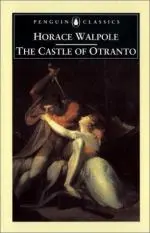 1. ‘The Castle of Otranto’ by Horace Walpole (1764)
1. ‘The Castle of Otranto’ by Horace Walpole (1764)
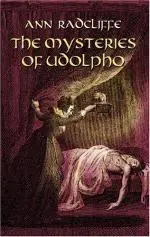 2. ‘The Mysteries of Udolpho’ by Ann Radcliffe (1794)
2. ‘The Mysteries of Udolpho’ by Ann Radcliffe (1794)
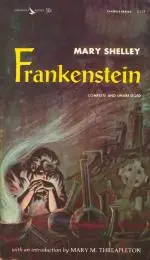 3. ‘Frankenstein’ by Mary Shelley (1818)
3. ‘Frankenstein’ by Mary Shelley (1818)
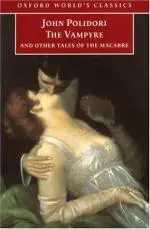 4. ‘The Vampyre’ by John William Polidori (1819)
4. ‘The Vampyre’ by John William Polidori (1819)
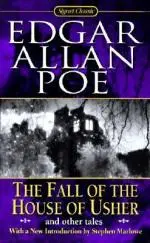 5. ‘The Fall of the House of Usher’ by Edgar Allan Poe (1839)
5. ‘The Fall of the House of Usher’ by Edgar Allan Poe (1839)
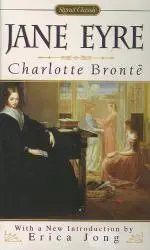 6. ‘Jane Eyre’ by Charlotte Bronte (1847)
6. ‘Jane Eyre’ by Charlotte Bronte (1847)
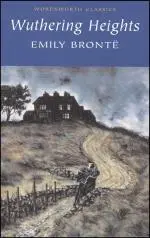 7. ‘Wuthering Heights’ by Emily Brontë (1847)
7. ‘Wuthering Heights’ by Emily Brontë (1847)
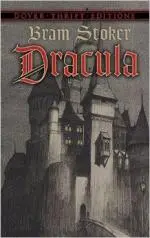 8. ‘Dracula’ by Bram Stoker (1897)
8. ‘Dracula’ by Bram Stoker (1897)
